Volvo XC90 vs VW Transporter Transporter – Differences & prices compared
Compare performance, boot space, consumption and price in one view.
Find out now: which car is the better choice for you – Volvo XC90 or VW Transporter Transporter?
The Volvo XC90 (SUV) comes with a Petrol MHEV or Plugin Hybrid engine and Automatic transmission. In comparison, the VW Transporter Transporter (Cargo Van) features a Diesel, Plugin Hybrid or Electric engine with Manuel or Automatic transmission.
When it comes to boot capacity, the Volvo XC90 offers 302 L, while the VW Transporter Transporter provides – depending on how much space you need. If you’re looking for more power, decide whether the 455 HP of the Volvo XC90 or the 286 HP of the VW Transporter Transporter suits your needs better.
In terms of consumption, the values are 3.50 L per 100 km for the Volvo XC90, and 21.90 kWh7.10 L for the VW Transporter Transporter.
Price-wise, the Volvo XC90 starts at 69800 £, while the VW Transporter Transporter is available from 37500 £. Compare all the details and find out which model fits your lifestyle best!
Volvo XC90
The Volvo XC90 stands out with its elegant Scandinavian design, seamlessly blending luxury with versatility. Inside, it offers a spacious and meticulously crafted interior, showcasing high-quality materials and advanced technology. The vehicle provides a comfortable and smooth driving experience, making it a popular choice for families and long journeys.
details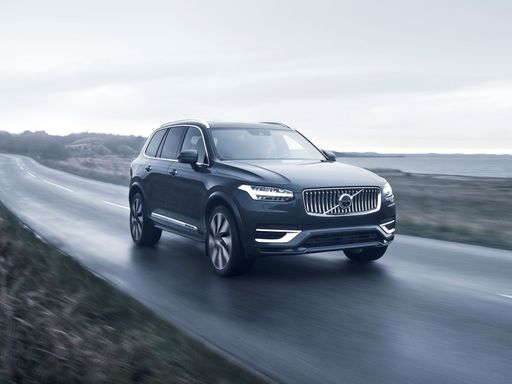 @ media.volvocars.com
@ media.volvocars.com
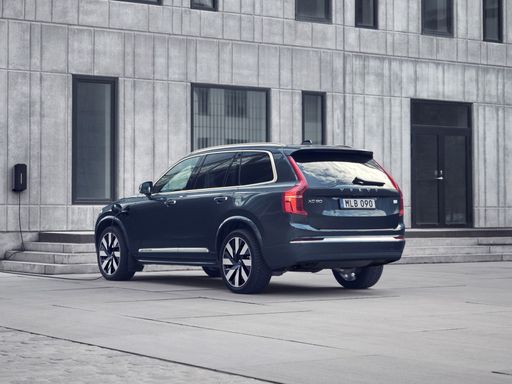 @ media.volvocars.com
@ media.volvocars.com
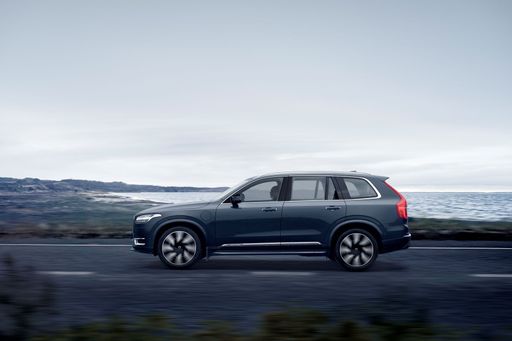 @ media.volvocars.com
@ media.volvocars.com
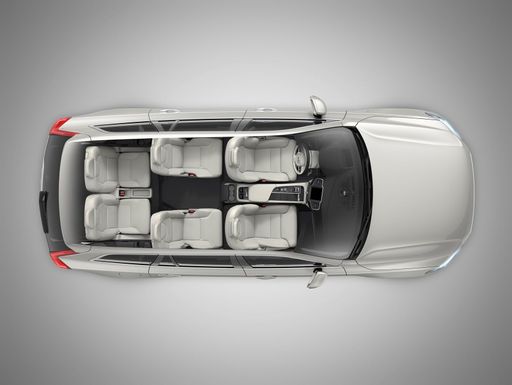 @ media.volvocars.com
@ media.volvocars.com
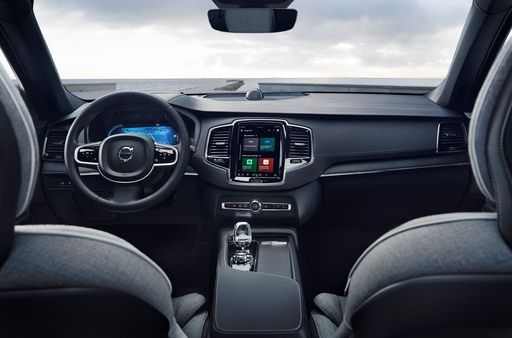 @ media.volvocars.com
@ media.volvocars.com
VW Transporter Transporter
The VW Transporter, a versatile favourite among commercial vehicles, combines practicality with modern design. Its spacious interior offers ample room for both passengers and cargo, making it a reliable choice for businesses and families alike. The vehicle's strong build and advanced technology ensure a smooth and efficient driving experience in various conditions.
details

|
|
|
|
|
Costs and Consumption |
|
|---|---|
|
Price
69800 - 84600 £
|
Price
37500 - 60800 £
|
|
Consumption L/100km
3.5 - 8.5 L
|
Consumption L/100km
7.1 - 8.4 L
|
|
Consumption kWh/100km
-
|
Consumption kWh/100km
21.9 - 24.4 kWh
|
|
Electric Range
71 km
|
Electric Range
56 - 331 km
|
|
Battery Capacity
14.70 kWh
|
Battery Capacity
11.8 - 63.8 kWh
|
|
co2
79 - 191 g/km
|
co2
0 - 220 g/km
|
|
Fuel tank capacity
71 L
|
Fuel tank capacity
55 L
|
Dimensions and Body |
|
|---|---|
|
Body Type
SUV
|
Body Type
Cargo Van
|
|
Seats
7
|
Seats
2 - 5
|
|
Doors
5
|
Doors
4 - 5
|
|
Curb weight
2080 - 2297 kg
|
Curb weight
1872 - 2462 kg
|
|
Trunk capacity
262 - 302 L
|
Trunk capacity
-
|
|
Length
4953 mm
|
Length
5050 - 5450 mm
|
|
Width
1923 mm
|
Width
2032 mm
|
|
Height
1771 mm
|
Height
1966 - 1985 mm
|
|
Payload
653 - 710 kg
|
Payload
755 - 1259 kg
|
Engine and Performance |
|
|---|---|
|
Engine Type
Petrol MHEV, Plugin Hybrid
|
Engine Type
Diesel, Plugin Hybrid, Electric
|
|
Transmission
Automatic
|
Transmission
Manuel, Automatic
|
|
Transmission Detail
Automatic Gearbox
|
Transmission Detail
Manual Gearbox, Automatic Gearbox
|
|
Drive Type
All-Wheel Drive
|
Drive Type
Front-Wheel Drive, All-Wheel Drive, Rear-Wheel Drive
|
|
Power HP
250 - 455 HP
|
Power HP
110 - 286 HP
|
|
Acceleration 0-100km/h
5.4 - 7.7 s
|
Acceleration 0-100km/h
7.4 - 16.9 s
|
|
Max Speed
180 km/h
|
Max Speed
112 - 150 km/h
|
|
Torque
360 - 709 Nm
|
Torque
310 - 415 Nm
|
|
Number of Cylinders
4
|
Number of Cylinders
4
|
|
Power kW
184 - 335 kW
|
Power kW
81 - 210 kW
|
|
Engine capacity
1969 cm3
|
Engine capacity
1996 - 2488 cm3
|
General |
|
|---|---|
|
Model Year
2024 - 2025
|
Model Year
2025
|
|
CO2 Efficiency Class
G, B
|
CO2 Efficiency Class
G, A
|
|
Brand
Volvo
|
Brand
VW
|
Volvo XC90
Introduction to the Volvo XC90: The Pinnacle of Swedish Innovation
The Volvo XC90 continues to uphold the Swedish car manufacturer’s reputation for delivering sophisticated and reliable vehicles. Known for its impressive blend of luxury, technology, and safety, the 2024 model year introduces updates that maintain its status as a leading luxury SUV. With options ranging from mild-hybrid to plug-in hybrid variants, the XC90 caters to a diverse array of needs and preferences.
Engine Options and Performance
The Volvo XC90 is available in both petrol mild-hybrid and plug-in hybrid configurations. The mild-hybrid version boasts a robust 250 PS, while the plug-in hybrid variant offers an astounding 455 PS. This range of powertrains ensures that drivers experience both efficient performance and the capability to tackle a variety of driving conditions.
Efficiency and Environmental Responsibility
One of the standout features of the Volvo XC90 is its commitment to environmental efficiency. The plug-in hybrid model achieves a remarkable fuel consumption rate of just 1.2 L/100km and an electric-only range of up to 71 km. These capabilities showcase Volvo’s dedication to reducing carbon emissions and promoting sustainable driving without compromising performance.
Cutting-Edge Safety Features
Volvo cars are synonymous with safety, and the XC90 is no exception. Incorporating advanced safety innovations such as Pilot Assist, City Safety with Autobrake, and Lane Keeping Aid, the XC90 provides drivers with confidence and peace of mind. These systems work together seamlessly to prevent accidents and protect passengers.
Luxurious Interior and Comfort
Step inside the Volvo XC90, and you'll be greeted by a meticulously crafted interior designed for comfort and convenience. The SUV accommodates up to seven passengers with ease, offering a spacious cabin and premium materials. Elegant designs, advanced infotainment technology, and premium sound systems transform every journey into a luxurious experience.
Price and Specifications
The Volvo XC90 is competitively priced, with a range starting from €79,890 up to €94,890, depending on the chosen configuration and features. Its dimensions, with a length of 4953 mm, width of 1923 mm, and height of 1771 mm, provide a substantial presence on the road. The luggage capacity ranges between 262 to 302 litres, allowing for flexibility depending on passenger and cargo needs. Equipped with an automatic transmission and all-wheel drive, the XC90 delivers a smooth and stable ride.
Conclusion: The Epitome of Modern SUV Design
The Volvo XC90 stands out as a top contender in the luxury SUV market, blending advanced technology, unparalleled safety, and luxurious comfort. Whether you choose the fuel-efficient plug-in hybrid or the reliable mild-hybrid version, the XC90 demonstrates Volvo's commitment to innovation and excellence. It remains a favourite among discerning drivers seeking a vehicle that embodies both style and substance.
VW Transporter Transporter
Revolutionizing Utility: The VW Transporter T7
The latest iteration of the VW Transporter, known widely as the Transporter T7, marks a significant evolution in utility vehicle design and functionality. As a mainstay in the VW lineup, the Transporter T7 comes with a plethora of options, ensuring that it meets a variety of professional and personal needs.
Diverse Models to Fit Every Need
For 2025, the VW Transporter T7 is available in multiple configurations, ranging from efficient diesel engines to innovative hybrid systems. The conventional models are powered by a 2.0 TDI diesel engine, offering three power outputs: 110 HP, 150 HP, and a vigorous 204 HP. For those seeking a more sustainable option, the 2.5 eHybrid model provides a combined power output of 233 HP with an electric range of 56 km, thanks to its 11.8 kWh battery.
Innovative Technical Aspects
Underpinning the technical innovations of the Transporter T7 is VW's dedication to cutting-edge engineering. The diesel engines provide torque ranging from 310 Nm up to 390 Nm, ensuring robust performance across the lineup. Moreover, the T7 offers configurations with either manual or automatic gearboxes, catering to different driving preferences.
The availability of front-wheel drive and the 4MOTION all-wheel-drive system across the range enhances versatility, allowing the Transporter T7 to tackle various terrains with ease. With body lengths extending to 5450 mm and a payload capacity of up to 1259 kg, the Transporter T7 stands as a paragon of practicality for transporting goods or accommodating passengers.
Comfort and Design Revolution
Beyond performance, the VW Transporter T7 has been designed with driver comfort and ergonomic efficiency in mind. The cabins offer ample seating configurations, supporting both two-seat and five-seat layouts. The inclusion of modern conveniences elevates the driving experience, making long hauls more manageable and stress-free.
The exterior dimensions, with a width of 2032 mm and a height up to 1969 mm, marry the classic robust design with a contemporary touch, making the Transporter T7 a visual centerpiece in any fleet.
Economical and Environmental Impact
Economic efficiency is another critical aspect of the VW Transporter T7's design philosophy. With diesel fuel tank capacities between 55 and 63 liters, and an emphasis on improving mileage with each engine variant, operational costs are kept at a minimum. Additionally, the eHybrid model not only offers environmental benefits but also presents substantial savings on fuel through its electric range capability.
Conclusion: The Transporter T7 Legacy Continues
The VW Transporter T7 furthers the legacy of its predecessors by combining practicality, innovation, and eco-friendliness. Whether utilized for business in its cargo van capacity or adapted for personal use with seating comforts, the Transporter T7 is set to remain a critical player in the automotive sector, pushing the boundaries of what a multi-purpose van can achieve.
What drivetrain options does the Volvo XC90 have?
The Volvo XC90 is offered with All-Wheel Drive.
The prices and data displayed are estimates based on German list prices and may vary by country. This information is not legally binding.
